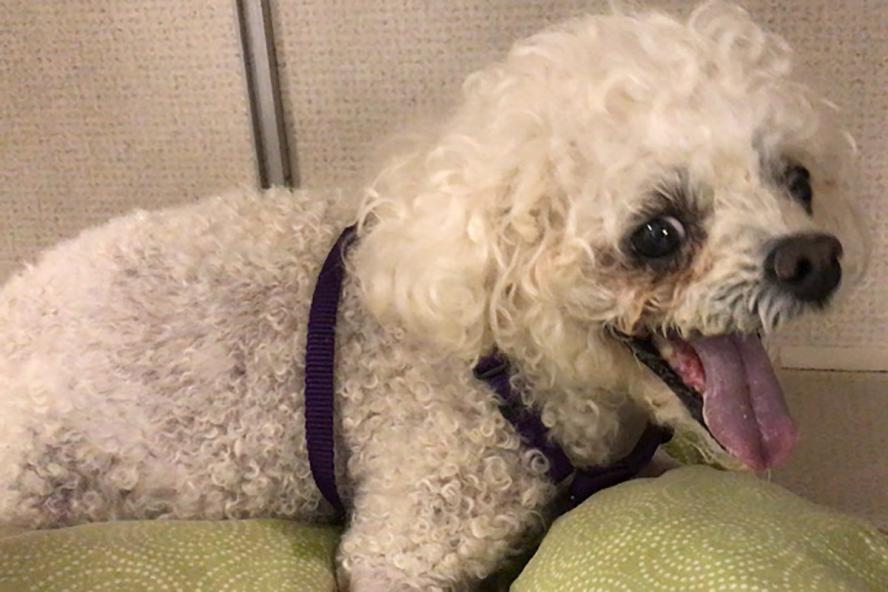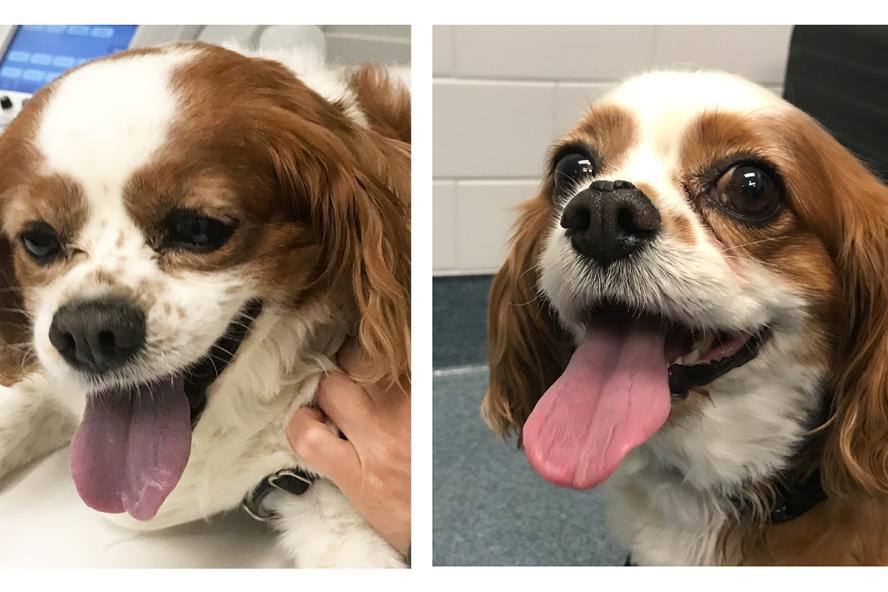Difficulty Breathing (Dyspnea)
Dogs and cats with heart disease or heart failure may show faster breathing rates and it may seem harder for them to breathe – this is sometimes called dyspnea. This is often due to fluid in or around their lungs. This fluid prevents full lung expansion, and it compromises the ability of the lungs to get oxygen into the bloodstream.
It is important to differentiate a dog’s normal panting (quick, shallow, open-mouth breathing after exercise or when they are hot) from an increased breathing rate due to heart failure (noted as fast breathing or extra breathing effort present even at rest).
Healthy dog breathing normally at rest
Healthy dog panting
Dog with mild difficulty breathing (dyspnea)
Chihuahua showing mild to moderate difficulty breathing (dyspnea)
Dog with marked difficulty breathing (dyspnea)
Dogs with heart failure often have difficulty breathing combined with cough
A dog with severe difficulty breathing may sit or stand with its legs in a wide stance, sometimes with mouth open, and neck outstretched. Many dogs with severe difficulty breathing will refuse to lie down on their side because it is harder for them to breathe in this position. Instead, they will prefer to sit or stand. An owner might even observe their pet trying to fall asleep in these positions.
Difficulty breathing is an emergency and you should seek treatment right away.

A dog with severe difficulty breathing may have a tongue that looks purple/blue instead of pink, showing that they are not getting enough oxygen.

The dog on the left has a purple/blue tongue (abnormal from not getting enough oxygen), and the dog on the right has a pink tongue (normal).
Cats with difficulty breathing may act in a similar fashion, or they may simply sit quietly. Or your cat may seek out quiet places to hide like a closet or under the bed. Cats do not normally pant the way that dogs do, and a cat breathing with its mouth open may be an emergency. On the other hand, a healthy cat that is purring may appear to have rapid breathing, and this is normal.
Healthy cat breathing normally
Healthy cat purring
Cat with mild difficulty breathing (dyspnea)
Cat with marked difficulty breathing (dyspnea)
Assessment of Breathing Rate and Breathing Effort: When looking for difficulty breathing, it is important to check both the breathing rate and the breathing effort (the amount of belly wall motion used for each breath). The breathing rate is how many breaths your pet takes in one minute, and this should be checked when your dog or cat is at rest or sleeping. The breathing rate should not be checked after exercise or when your pet is excited or when your cat is purring.
You can take your pet’s resting breathing rate by counting how many times your pet’s chest rises and falls in one minute (count each chest rise, or inhalation, as one breath). You can also count their breaths in 30 seconds and multiply the number by 2. In most dogs and cats, the breathing rate is usually less than 35 breaths per minute at rest or during sleep. See video above of "healthy dog breathing normally at rest" and then count the rising and falling of your pet's chest to calculate their breathing rate.
You should also pay attention to the amount of belly wall or chest wall motion with each breath. Animals with difficulty breathing use extra effort to breathe. This is best seen as more motion of the belly or chest wall on each breath. The videos above of difficulty breathing highlight looking at both the head and the chest wall and belly to look for excess breathing effort.
If you notice your pet is taking rapid, deep breaths while at rest, it can be helpful to take a video of the breathing.
Severe difficulty breathing is an emergency. Veterinary care should be sought immediately.
Please note that increased breathing rate or effort can be caused by many other factors such as exercise, heat stress, and lung disease, but difficulty breathing that does not resolve with rest is almost always a veterinary emergency.